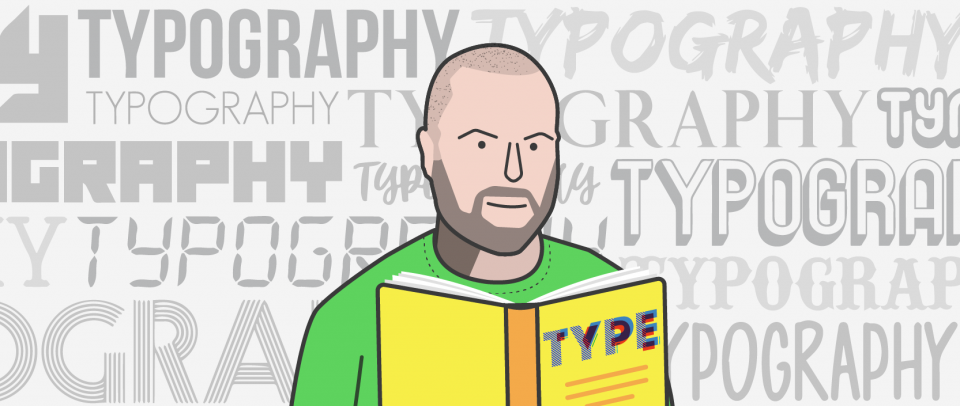A Big List of Typography Books
The holidays are coming!
I don’t know about y’all, but my family always tells me I’m so hard to buy for. I never feel like that that though. I love art! food! music! tech! bikes! doings things! uhm. candles! One thing tends to actually work though: books.
If someone I know puts an ounce of effort into selecting a book they think I would like, I’ll cherish it. One type of book that I can’t get enough of is books on typography. In a sense, you get double the bang for your buck. A book on typography has no choice but to have incredibly typography itself, so while you read and learn, you get to linger on the typesetting of the book itself. Although I bet that runs counter to what the authors want! They are always saying good typography shouldn’t call attention to itself but get out of the way. Still, in an educational context, I think we can admire safely.
I would think a wide swath of the population would enjoy a book about typography. Even if they aren’t typographers or designers, type is a kind of art and I’d say most people enjoy art. Even Kayne famously gets emotional over fonts.
So for whatever reason you might be browsing typography books, here’s a big list of them. I literally own all of them, so don’t get any gift ideas for me 😉
Web Typography by Richard Rutter
This one is hot off the presses, just released in August 2017!
Better Web Typography for a Better Web by Matej Latin
Nearly just new, Matej’s book just came out this July!

On Web Typography by Jason Santa Maria
If you’ve followed the web design industry for a while, you’re probably already a massive fan of Jason Santa Maria.

A Pocket Guide to Combining Typefaces by Tim Brown
Tim is head of typography at Typekit!

The Elements of Typographic Style by Robert Bringhurst
If any book on this list could be considered the ultimate classic, this is it.

Thinking with Type
Ellen Lupton’s classic makes every list of required typography reading I’ve ever seen. The official website is more of a companion site with loads of information.

Our all time best selling book is now available in a revised and expanded second edition. Thinking with Type is the definitive guide to using typography in visual communication, from the printed page to the computer screen. This revised edition includes forty-eight pages of new content, including the latest information on style sheets for print and the web, the use of ornaments and captions, lining and non-lining numerals, the use of small caps and enlarged capitals, as well as information on captions, font licensing, mixing typefaces, and hand lettering. Throughout the book, visual examples show how to be inventive within systems of typographic form—what the rules are and how to break them. Thinking with Type is a type book for everyone: designers, writers, editors, students, and anyone else who works with words. The popular online companion to Thinking with Type (www.thinkingwithtype.com) has been revised to reflect the new material in the second edition.
The Anatomy of Type by Stephen Coles

Students and professionals in any creative field can benefit from a good typographic eye. The Anatomy of Type (published in the UK as The Geometry of Type) is all about looking more closely at letters. Through visual diagrams and practical descriptions, you’ll learn how to distinguish between related typefaces and see how the attributes of letterforms (such as contrast, detail, and proportion) affect the mood, readability, and use of each typeface. Nutritional value aside, the spreads full of big type make tasty eye candy, too.
Typography for Lawyers by Matthew Butterick

Originally released to great acclaim in 2010, Typography for Lawyers was the first guide to the essentials of typography aimed specifically at lawyers. Author Matthew Butterick, an attorney and Harvard-trained typographer, dispelled the myth that legal documents are incompatible with excellent typography. Butterick explained how to get professional results with the tools you already have quickly and easily.
Butterick got his degree in design and typography from Harvard. He began his career as a font designer in Boston. At the beginning of the Internet era, Butterick started Atomic Vision, a website-design company in San Francisco. Later, he attended UCLA law school and became a member of the California bar. In 2012, Butterick received the Legal Writing Institute’s Golden Pen Award for Typography for Lawyers.
Butterick’s other projects include Practical Typography, an online book (practicaltypography.com), the fonts Equity, Concourse, Triplicate, and Advocate, and Pollen, software for publishing electronic books (pollenpub.com).
Bonus!
I asked my friend Robin Rendle, who’s quite a typographer and typophile, his favorite books on typography. A tough question for him, but he whittled it down to three. He agreed with me on Ellen Lupton’s Thinking with Type, and gave me these other two:
Shady Characters by Keith Houston

Whether investigating the asterisk (*) and dagger (†)—which alternately illuminated and skewered heretical verses of the early Bible—or the at sign (@), which languished in obscurity for centuries until rescued by the Internet, Keith Houston draws on myriad sources to chart the life and times of these enigmatic squiggles, both exotic (¶) and everyday (&).
Counterpunch by Fred Smeijers

Counterpunch is packed with ideas. It is both an investigation into the technics of making metal type by hand, and a consideration of present questions in type design. The discussion takes in the fundamentals of designing and making letters, so that the book can be read as a guide to type and font construction in any medium. Lively, pointed drawings and photographs complement an equally fresh text.
There ya have it! Did I miss any of your favs?






